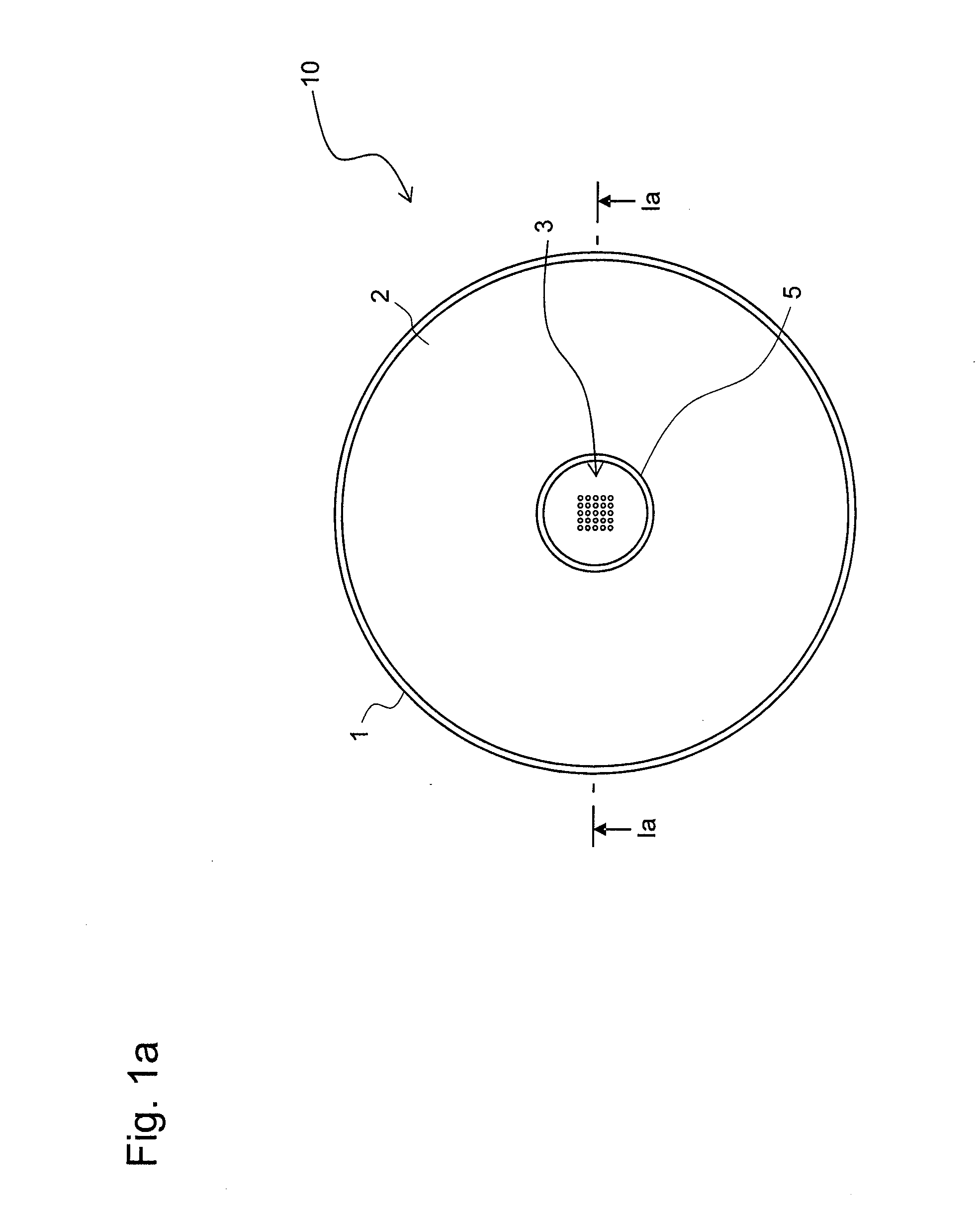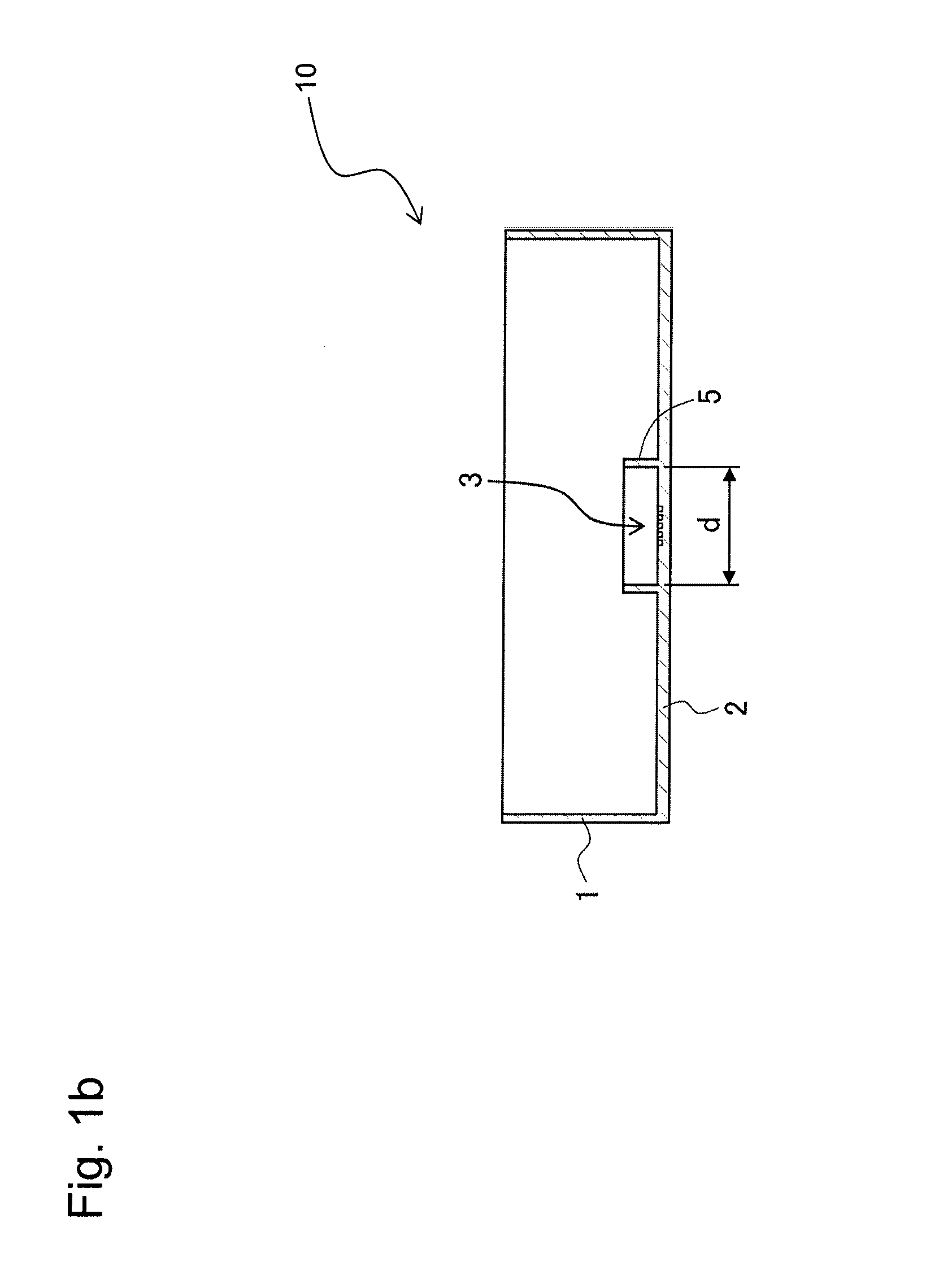Method for producing embryos by in vitro culture, and method, apparatus, and system for selecting embryos
a technology embryos, applied in the field of in vitro culture method and method, apparatus and system for selecting embryos, can solve the problems of poor development, inability to obtain prior art, and inability to achieve high conception rates, etc., and achieve the effect of efficient obtaining high conception rates
- Summary
- Abstract
- Description
- Claims
- Application Information
AI Technical Summary
Benefits of technology
Problems solved by technology
Method used
Image
Examples
experiment 1
Relationship Between the Indicators of the Present Invention and Conception Rate
[0239]In this experiment, a culture vessel (10) shown in FIG. 1a to FIG. 1f was used, in which a cell holding section (3) comprising 25 microwells (4) and a ring-shaped inner wall (5) surrounding the periphery of the cell holding section (3) are formed at the center of a 35-mm culture dish comprising a bottom wall (2) and a side wall (1) provided on the circumference thereof. The diameter “r” of each microwell (4) composing the cell holding section (3) is 270 μm, and the depth “L” thereof is 150 μm. The 25 microwells (4) were aligned to form 5 lines and 5 rows with an interval “α” of 150 μm between wells. A bottom surface (6) of each microwell is inclined downward from the peripheral part to the center, forming a circular conical surface, wherein the angle “α” formed by the center line and the generating line of the circular cone is 83°. The ring-shaped inner wall has a diameter of 7 mm and a height of 1...
experiment 2
Preliminary Examination
[0263]The above indicators 3 to 5 had been predicted to be useful as factors for predicting that embryos have high conception rates based on the results of the preliminary examination conducted before Experiment 1. Procedures and results of the preliminary examination are as described below.
[0264]Embryos used in this experiment were cattle (Bos taurus) embryos.
[0265]The following indicators were used as predictive factor candidates.
[0266]At 31 hours after fertilization (upon completion of initial cleavage): the number of blastomeres, the uniformity of blastomeres, and the presence or absence of fragmentation.
[0267]At 55 hours after fertilization (upon completion of third cleavage): the number of blastomeres, the uniformity of blastomeres, and the presence or absence of fragmentation.
[0268]At 168 hours after fertilization (the early blastocyst stage, the blastocyst stage, or the expanded blastocyst stage): the blastocyst stage (whether or not an embryo has reac...
experiment 3
Preliminary Examination of the First Cleavage Time
[0302]Developmental processes were followed using a real-time cell culture observation apparatus. The amounts of oxygen consumed by embryos that had reached the blastocyst stage (early blastocyst or expanded blastocyst) were then analyzed by SECM. Embryos used in this experiment were cattle (Bos taurus) embryos. Chromosome analysis was conducted according to Somfai et al. (2010). After measurement of the amounts of oxygen consumed, embryos were cultured with CR1aa supplemented with 100 ng / ml vinblastine and 5% CS for 17 hours, and then the cell cycle was stopped at the mitotic phase (M phase). Embryos were treated with 0.4 ml of 1% sodium citrate, and 0.02 ml of methanol acetate (1:1) was injected into the same solution for fixation. Ten (10) minutes later, embryos were placed on a slide glass. A small amount (1 μl) of acetic acid was added dropwise to the embryos, and then embryos were fixed again with ethanol acetate (1:3). Chromos...
PUM
| Property | Measurement | Unit |
|---|---|---|
| time | aaaaa | aaaaa |
| humidity | aaaaa | aaaaa |
| humidity | aaaaa | aaaaa |
Abstract
Description
Claims
Application Information
 Login to View More
Login to View More - R&D
- Intellectual Property
- Life Sciences
- Materials
- Tech Scout
- Unparalleled Data Quality
- Higher Quality Content
- 60% Fewer Hallucinations
Browse by: Latest US Patents, China's latest patents, Technical Efficacy Thesaurus, Application Domain, Technology Topic, Popular Technical Reports.
© 2025 PatSnap. All rights reserved.Legal|Privacy policy|Modern Slavery Act Transparency Statement|Sitemap|About US| Contact US: help@patsnap.com



